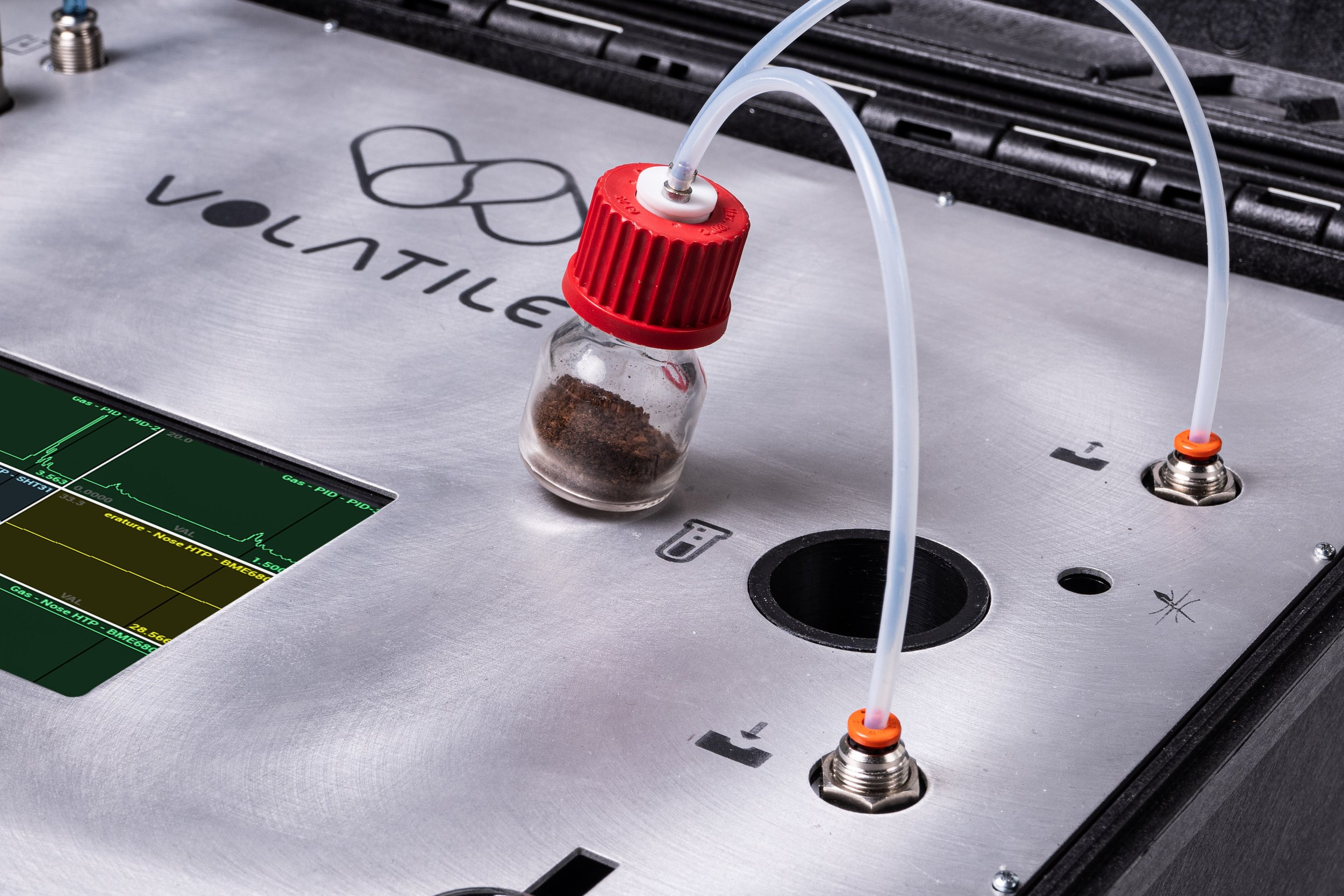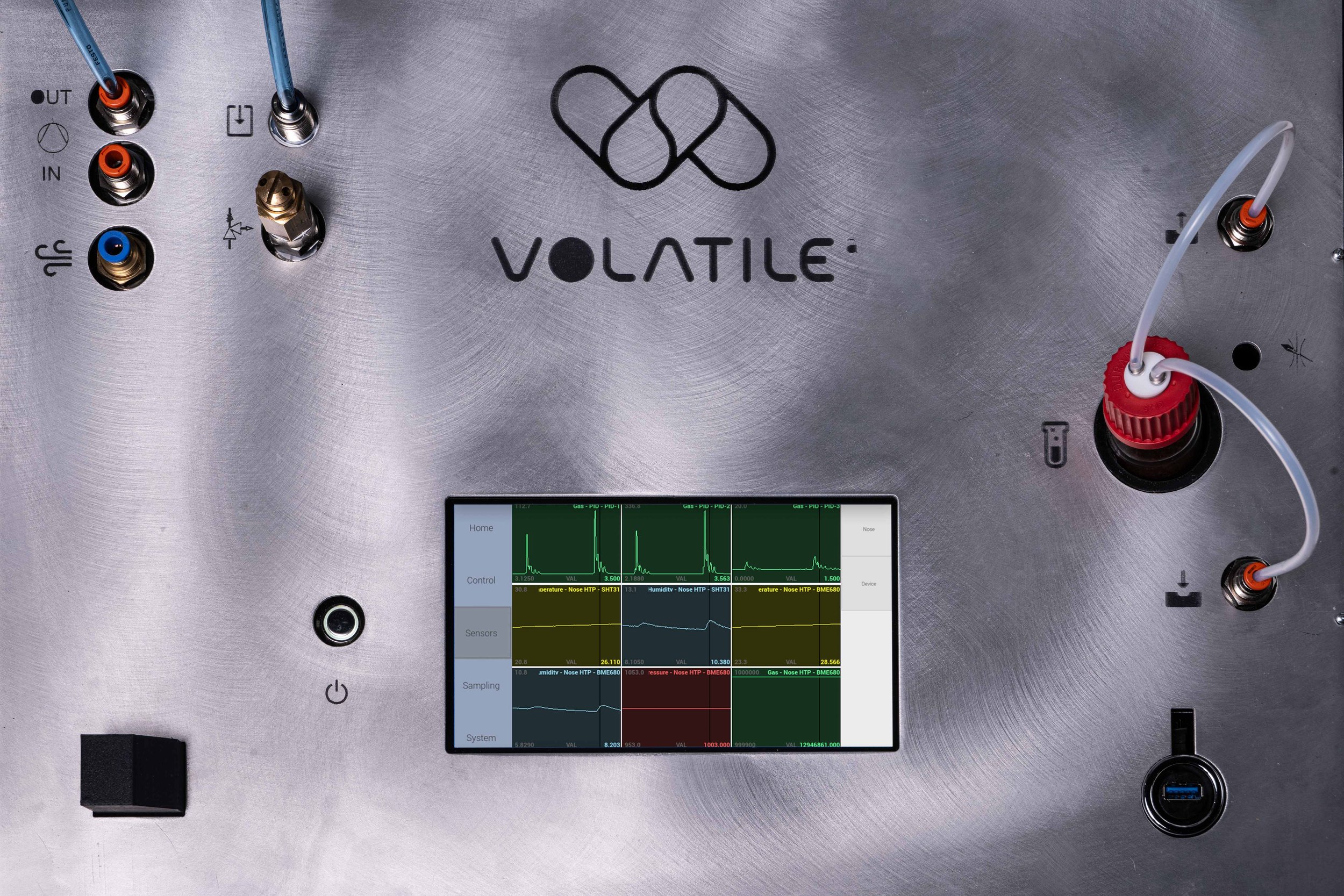Nespresso capsule similarity profiling
Scout3 case study
The goal of Volatile AI
Ingredient chemical profiling for quality control is a time consuming and highly complex task requiring professional chemists. At Volatile AI our goal is to create a solution for field and on-site chemical profiling without going to the analytical lab.
Coffee quality control today
For roasted coffee monitoring today, several lab methods are used. Robusta and arabica blends can be tested using nuclear magnetic resonance (NMR), while gas chromatography – mass spectrometer (GC-MS) can be used for off-note control and in some cases for origin tracing. Meanwhile the final blend flavour is controlled by the master blender or the taster panel.
A lab analysis using GC-MS or NMR takes around 30-60 min of running plus the sample preparation and warm-up time. When accounting for the manual interpretation of the acquired peaks, the whole lab process can run into several hours to generate an insight for the business. Such complexity results in fewer screening points. Additionally, shipping samples to the lab increases CO2 emissions incurred in transport.
Volatile AI’s Scout3 testing
Scout3 can be tuned for multiple applications in coffee: arabica / robusta blend ratio control, washed / natural preparation method control and blend similarity scoring.
The sample analysis steps are the following:
1. Once the system is started, button is pressed on the touchscreen to trigger sampling warm up (takes up to 15 minutes).
2. In the meantime, 2mg of ground roasted coffee beans or brewed room temperature coffee are added to the sample vial.
3. The sample vial is manually sealed using a threaded cap.
4. Once the system and sample are ready, press the touchscreen button to trigger sampling.
5. Coffee samples take 5 minutes to get the full result.
6. The results are displayed on the screen. In the “advanced” software mode, the user can see the full lab-like chromatogram of the chemical composition signal. In the “quick” software mode, only the final answer is shown. For example: “90% arabica”.
Nespresso coffee pod similarity profiling
We recently did a study with brewed Nespresso Company capsules, trying to identify similaries between different capsule flavours. The approach involved testing Ristretto, Ristretto Decaf, Arpeggio, India, Ethiopia, Capriccio, Volluto, Volluto Decaf.
In parallel, the same capsules were tested using a lab chromatograph from AlphaMOS, called Heracles.
In Scout3 The capsules were brewed using the Nespresso Mini coffee machine achieving 40ml of liquid. The brewed coffee was cooled in the fridge to 3°C and 1ml was transferred to the sampling vial. The sampling vial was incubated to 40C and then samples. The gas chromatography column was maintained at 25°C.
The final results were very similar between both instruments, showing smell and flavour similarities between: Volluto and Volluto Decaf; Ristretto and Arpeggio, while India and Ethiopia were at the opposite ends of the flavour map based on principal component analysis (PCA) results.
It is important to note that Scout3 does not require special gas cylinders for carrier gas and can be transported around and set up in 15 minutes for sampling in 2 clicks. Meanwhile, it is able to achieve similarity scores of a lab instrument.
Scout3 Nespresso pod similarity profiling results
(Red = India; Pink = Ristretto; Green = Arpeggio; Grey = Ristretto Decaf; Purple = Volluto; Brown = Volluto Decaf; Blue = Capriccio; Orange = Ethiopia)



